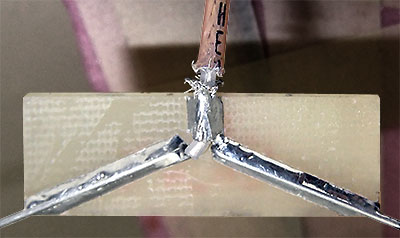BEAR-6 - May 16th, 2010 |
|
|
|
|
This launch was while we were at The Big Jump and the North Battleford, Saskatchewan, airport to obtain upper wind data in preparation for the launch of the 8 million cu. ft. Le Grand Saut balloon. We weren't sure how large the neck of a 1000g balloon would stretch, but James had little trouble stretching one over the 3" hose fitting on the helium truck and carefully cracked the outlet valve. Needless to say, with 1800 psi pressure present, the balloon quickly inflated with what one could easily tell was more then enough helium to lift our payload at a decent assent rate.
|
|
|
Launching a balloon at night with lights attached is fun and it was interesting to find just how far one can see different light sources. Right - Besides chemical lights, LEDs of various colors tied to ordinary party balloons were also launched during the night to monitor wind conditions. The LED's, each with a tiny battery, were purchased as finger lights in packages of 4 for $1 and were easily visible for several miles. An inexpensive way to monitor the wind at night, but many were also launched just for the fun of it. We normally follow our payloads on the ground and recover them shortly after they land, but this would have to wait this time until after the launch and recovery of Michel Fournier, his capsule and the Le Grand Saut balloon. As we waited to do this, our balloon's altitude approached 100,000 ft. and as dawn approached, we anticipated seeing our balloon suddenly become visible against the semi-dark pre-dawn sky as it entered the sun light high above us. Then shortly before the balloon burst at 114,635 ft. it suddenly appeared like a very bright star although over 30 miles away. |
||
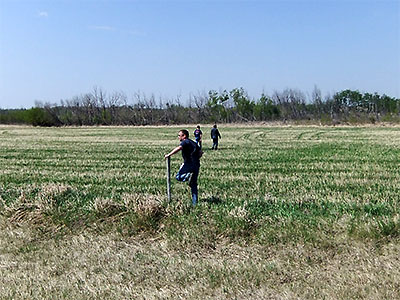 |
We left to recover our tracker after Le Grand Saut launch was cancelled and packing up its balloon, but recovery was not as easy as expected. The last received position report was from an altitude of 25,440 ft. and no further transmissions were heard when we arrived in the area where we figured it would be, but we were confident it could be found. Being in an area with no APRS activity helped as turning off our vehicle APRS transmitters left just the lost tracker signal to listen for and as we began a grid search a very weak signal was heard within minutes just south of where we started. Checking further south, east and west quickly determined the tracker was further west and a strong enough signal to decode and provide the trackers exact location was received about 20 min. later and the tracker was recovered little more then a mile from where we started. | |
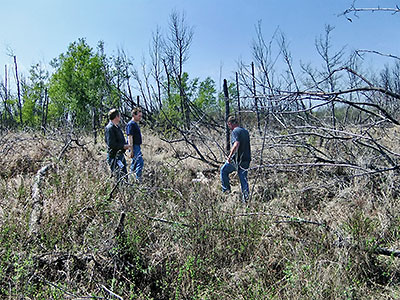 |
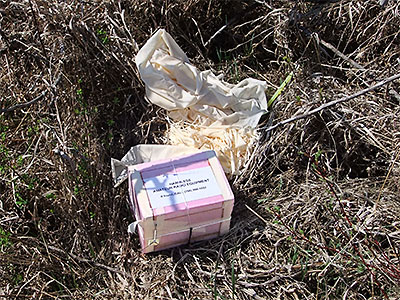 |
|
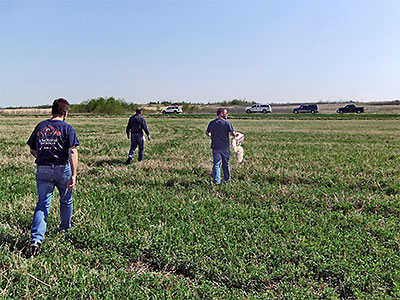 |
The tracker was found in some brush not far from the road and only about 1000ft. from where its signal was strong enough to be decoded.
|
|
|
Examination of the antenna answered why tracker data suddenly stopped being received during it's decent and its transmissions could only be detected ≈ a mile on the ground and decoded for such a short distance. The antenna was simply hung a few inch's below the payload box by its coax feed line and survived the BEAR-5 flight OK, but there must have been much more turbulence this time which caused excessive flexing and the feed line shield to become broken where soldered to the antenna. The solution used to prevent this on SABLE-4 was to press the antenna PCB material into a slot cut in the foam box to prevent flexing at the joint (but, as we later discovered, Murphy had another equally good way to screw up this antenna design on that flight). Click here for a BEAR-6.kml file. |
||
| To BEAR Home Page |
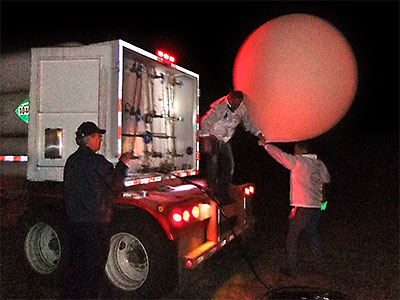
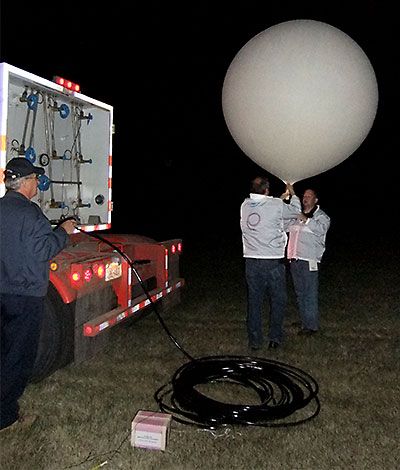
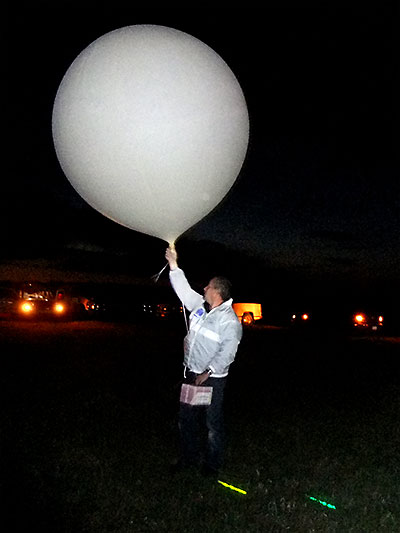
 Garrett and James tied off the balloon, attached the APRS tracker plus a few chemical light sticks to allow visually observing upper wind conditions for the first few thousand feet at least and launched the balloon at 3:50 AM. No measurements were used this time to
ensure the balloon was properly filled for a particular assent rate which ended up being ≈1040 ft./min. and confirmed the balloon was filled with more then enough helium. The payload box and tracker was previously used for
Garrett and James tied off the balloon, attached the APRS tracker plus a few chemical light sticks to allow visually observing upper wind conditions for the first few thousand feet at least and launched the balloon at 3:50 AM. No measurements were used this time to
ensure the balloon was properly filled for a particular assent rate which ended up being ≈1040 ft./min. and confirmed the balloon was filled with more then enough helium. The payload box and tracker was previously used for 